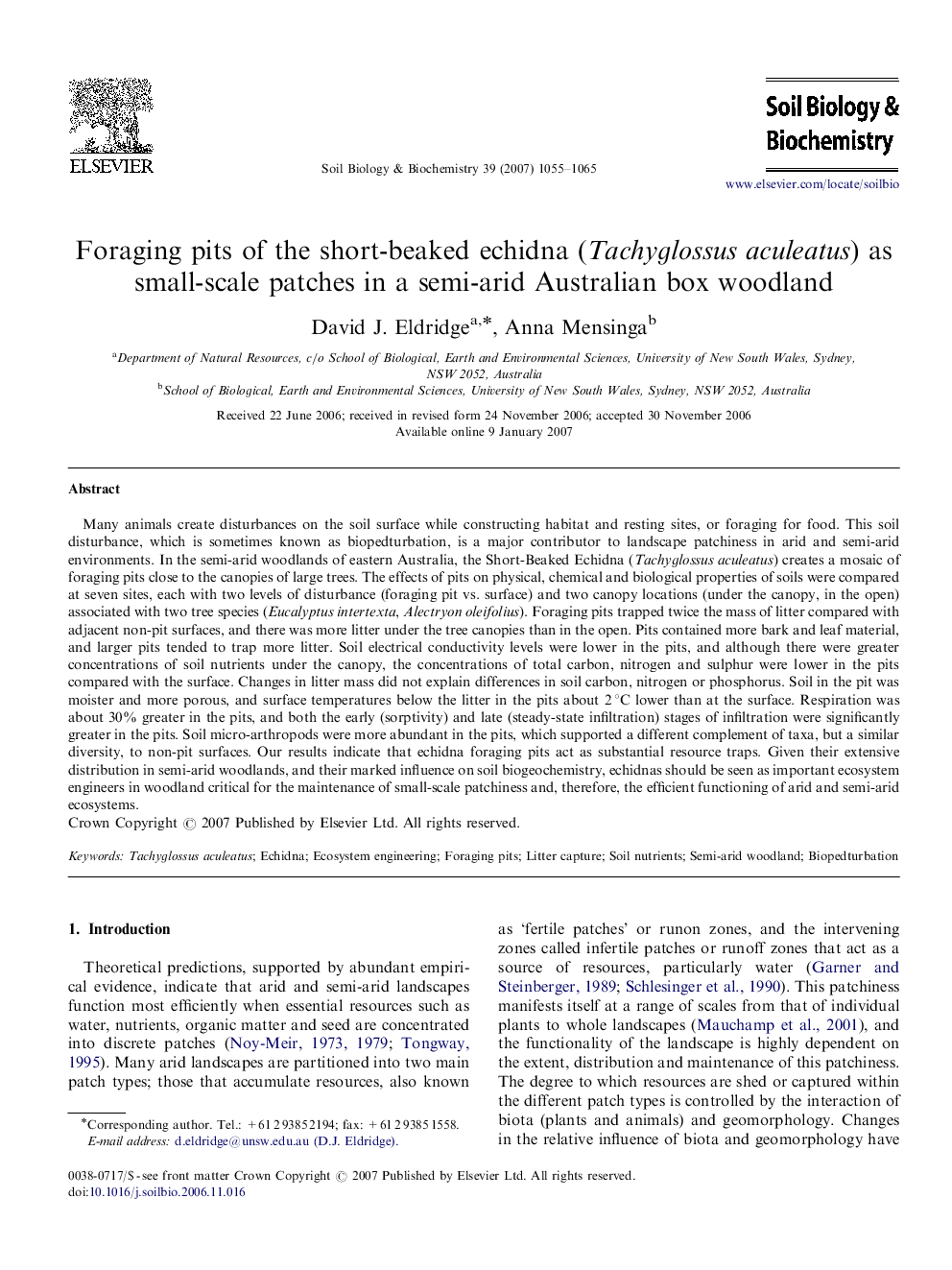| کد مقاله | کد نشریه | سال انتشار | مقاله انگلیسی | نسخه تمام متن |
|---|---|---|---|---|
| 2026413 | 1070029 | 2007 | 11 صفحه PDF | دانلود رایگان |

Many animals create disturbances on the soil surface while constructing habitat and resting sites, or foraging for food. This soil disturbance, which is sometimes known as biopedturbation, is a major contributor to landscape patchiness in arid and semi-arid environments. In the semi-arid woodlands of eastern Australia, the Short-Beaked Echidna (Tachyglossus aculeatus) creates a mosaic of foraging pits close to the canopies of large trees. The effects of pits on physical, chemical and biological properties of soils were compared at seven sites, each with two levels of disturbance (foraging pit vs. surface) and two canopy locations (under the canopy, in the open) associated with two tree species (Eucalyptus intertexta, Alectryon oleifolius). Foraging pits trapped twice the mass of litter compared with adjacent non-pit surfaces, and there was more litter under the tree canopies than in the open. Pits contained more bark and leaf material, and larger pits tended to trap more litter. Soil electrical conductivity levels were lower in the pits, and although there were greater concentrations of soil nutrients under the canopy, the concentrations of total carbon, nitrogen and sulphur were lower in the pits compared with the surface. Changes in litter mass did not explain differences in soil carbon, nitrogen or phosphorus. Soil in the pit was moister and more porous, and surface temperatures below the litter in the pits about 2 °C lower than at the surface. Respiration was about 30% greater in the pits, and both the early (sorptivity) and late (steady-state infiltration) stages of infiltration were significantly greater in the pits. Soil micro-arthropods were more abundant in the pits, which supported a different complement of taxa, but a similar diversity, to non-pit surfaces. Our results indicate that echidna foraging pits act as substantial resource traps. Given their extensive distribution in semi-arid woodlands, and their marked influence on soil biogeochemistry, echidnas should be seen as important ecosystem engineers in woodland critical for the maintenance of small-scale patchiness and, therefore, the efficient functioning of arid and semi-arid ecosystems.
Journal: Soil Biology and Biochemistry - Volume 39, Issue 5, May 2007, Pages 1055–1065